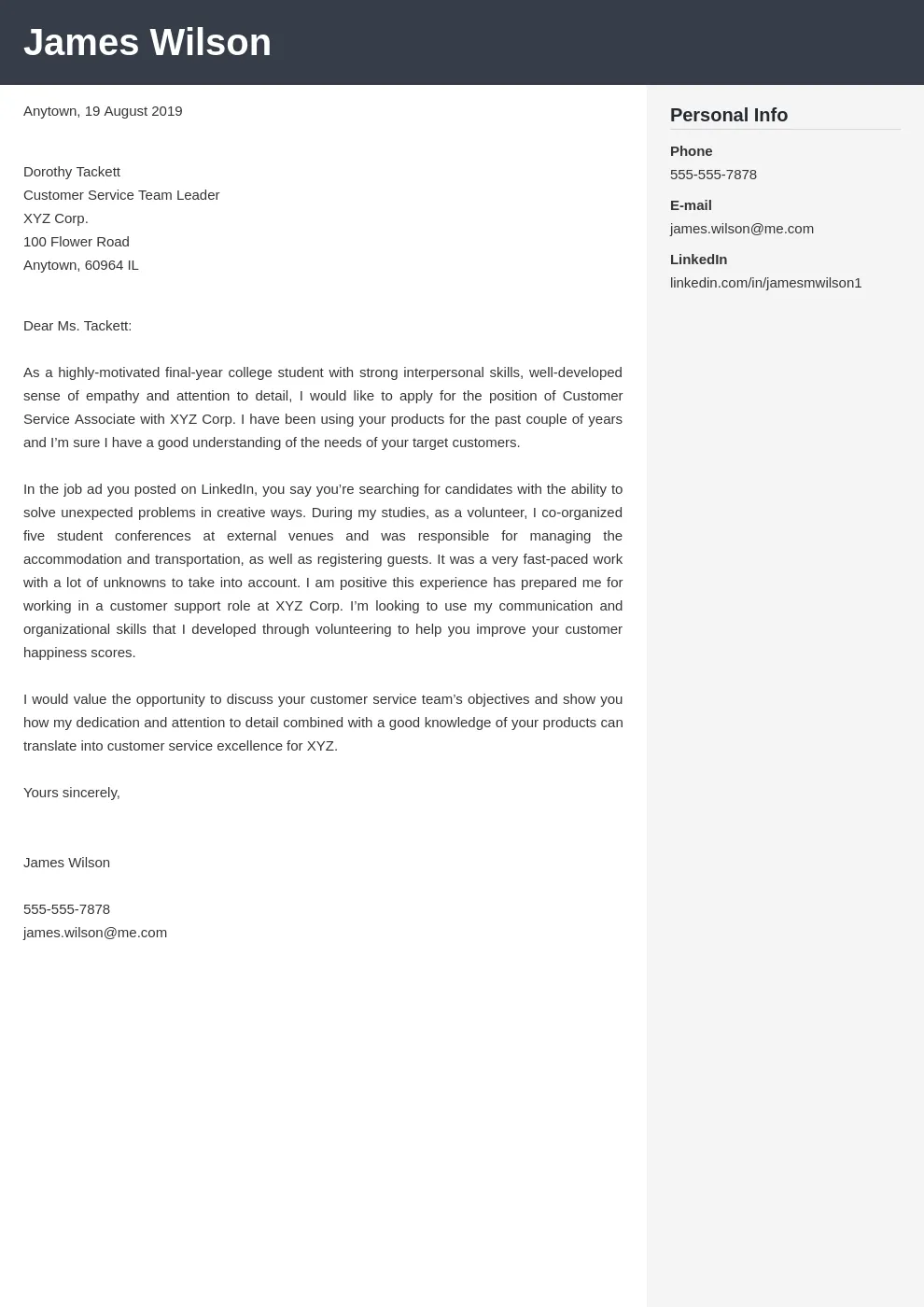Why a Strong Customer Service Cover Letter Matters
In the competitive world of job hunting, an entry-level customer service cover letter serves as your first introduction to a potential employer. It’s more than just a formality; it’s a crucial tool that can make or break your chances of landing an interview. A well-crafted cover letter allows you to showcase your personality, skills, and enthusiasm, setting you apart from other candidates who might only submit a resume. This document provides an opportunity to expand on your qualifications, demonstrate your understanding of the role, and highlight how your experiences align with the company’s needs. Therefore, investing time and effort in creating a compelling cover letter is essential for anyone seeking an entry-level position in customer service.
Understanding the Entry-Level Customer Service Role
Entry-level customer service positions are diverse, but they all share a common goal: to provide excellent service and support to customers. These roles often involve interacting with customers via phone, email, chat, or in person, addressing their inquiries, resolving issues, and ensuring their satisfaction. Understanding the core responsibilities and expectations of these roles is vital when crafting your cover letter. Familiarize yourself with the specific requirements mentioned in the job description, such as communication skills, problem-solving abilities, and technical proficiency. Tailoring your letter to address these specific needs demonstrates your awareness and suitability for the position, increasing your chances of getting hired. It’s about proving you understand what it means to support customers.
Key Skills to Highlight in Your Cover Letter
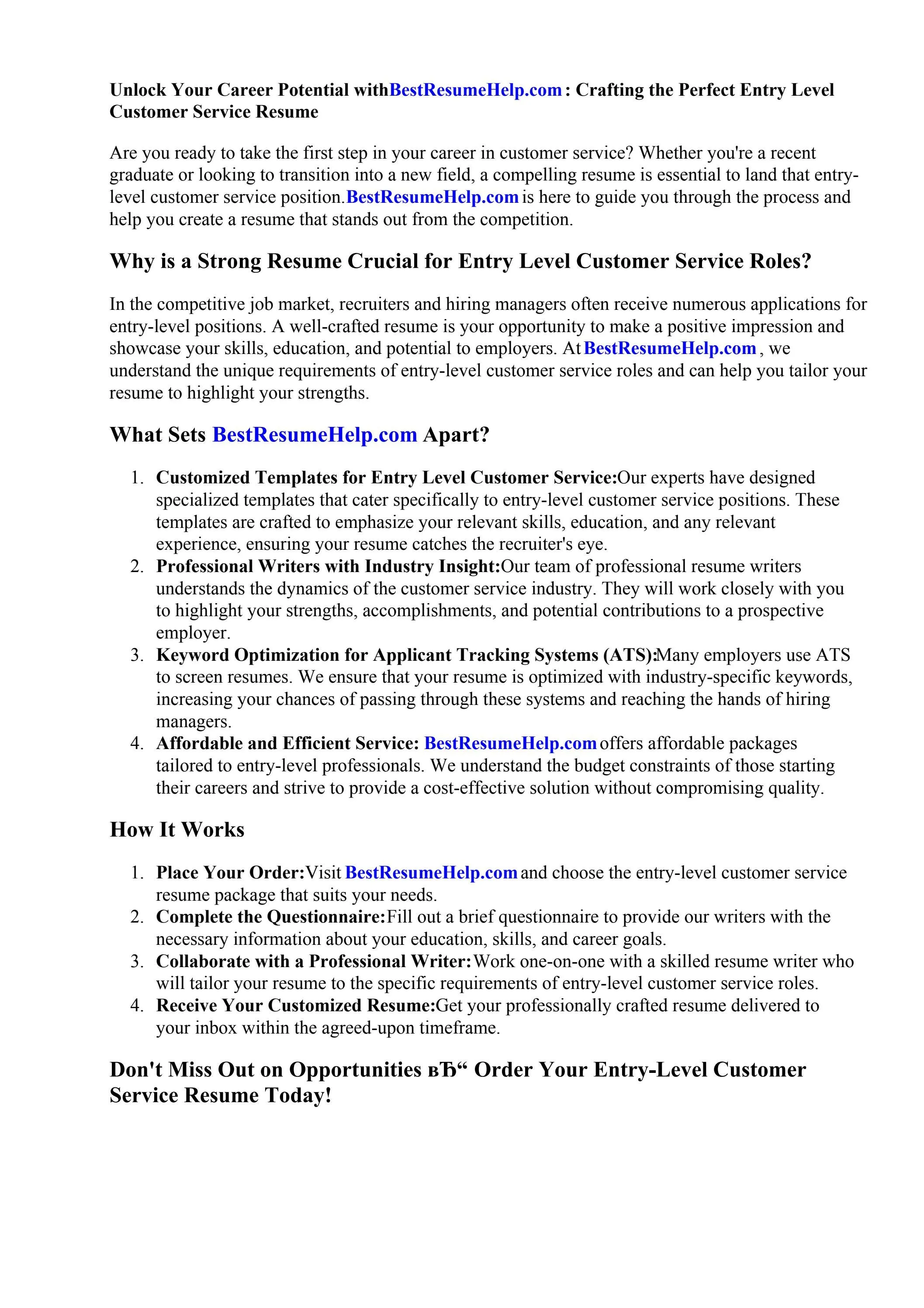
Customer service roles rely on a specific set of skills. Highlighting these skills in your cover letter will immediately catch the recruiter’s attention. Focus on both your soft and hard skills, providing specific examples to support your claims. Avoid simply listing skills; instead, demonstrate how you’ve utilized these skills in previous experiences or situations. This approach not only makes your letter more engaging but also provides concrete evidence of your capabilities. Remember to align your skills with the requirements outlined in the job description, showing that you possess the qualities the employer is seeking.
Communication Skills
Effective communication is the cornerstone of any customer service role. In your cover letter, emphasize your ability to communicate clearly, concisely, and professionally. Mention your active listening skills, your ability to explain complex information in a simple manner, and your proficiency in both written and verbal communication. Provide examples of how you’ve successfully communicated with customers or clients in the past, resolving issues, providing information, or building rapport. Communication is not just about speaking; it’s about understanding the other person and getting your point across.
Problem-Solving Abilities
Customer service often involves addressing and resolving customer issues. Showcase your problem-solving skills by highlighting your ability to analyze situations, identify solutions, and implement effective strategies. Describe instances where you’ve successfully resolved customer complaints, troubleshooted technical problems, or found creative solutions to challenging situations. Use the STAR method (Situation, Task, Action, Result) to structure your examples, providing a clear and concise narrative of your problem-solving process. Problem-solving is about finding the best solution.
Empathy and Patience
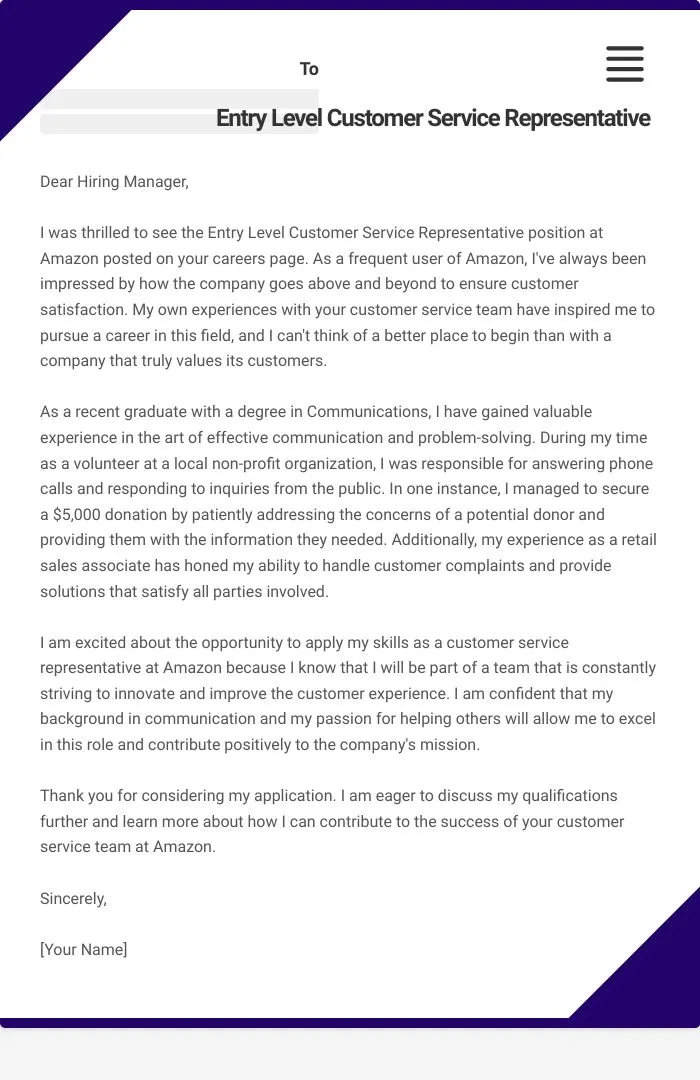
Empathy and patience are critical for handling customer interactions effectively. In your cover letter, emphasize your ability to understand and relate to customers’ perspectives, even in difficult situations. Demonstrate your patience by describing how you’ve remained calm and composed when dealing with challenging customers or resolving complex issues. Mention any experiences where you’ve provided support, offered assistance, or shown understanding towards others. Show the recruiter that you can handle stressful situations calmly and with compassion.
Technical Proficiency
Depending on the role, technical proficiency may be required. Highlight any relevant technical skills you possess, such as experience with CRM software, ticketing systems, or other relevant tools. If you’re familiar with any specific software or platforms used by the company, be sure to mention them. Even if you don’t have extensive technical experience, you can emphasize your willingness to learn and your ability to quickly adapt to new technologies. In today’s world, a degree of technical knowledge is always helpful.
Formatting Your Entry-Level Cover Letter
The format of your cover letter is just as important as its content. A well-formatted letter is easy to read and visually appealing, making a positive first impression on the reader. Use a professional and clear font, such as Times New Roman or Arial, and maintain a consistent font size throughout the document. Organize your content into logical sections, using headings and subheadings to break up large blocks of text. Keep your paragraphs concise and to the point, and use bullet points or lists to highlight key information. Proofread carefully and ensure your letter is free of any grammatical errors or typos. The format sets the tone.
Header and Contact Information
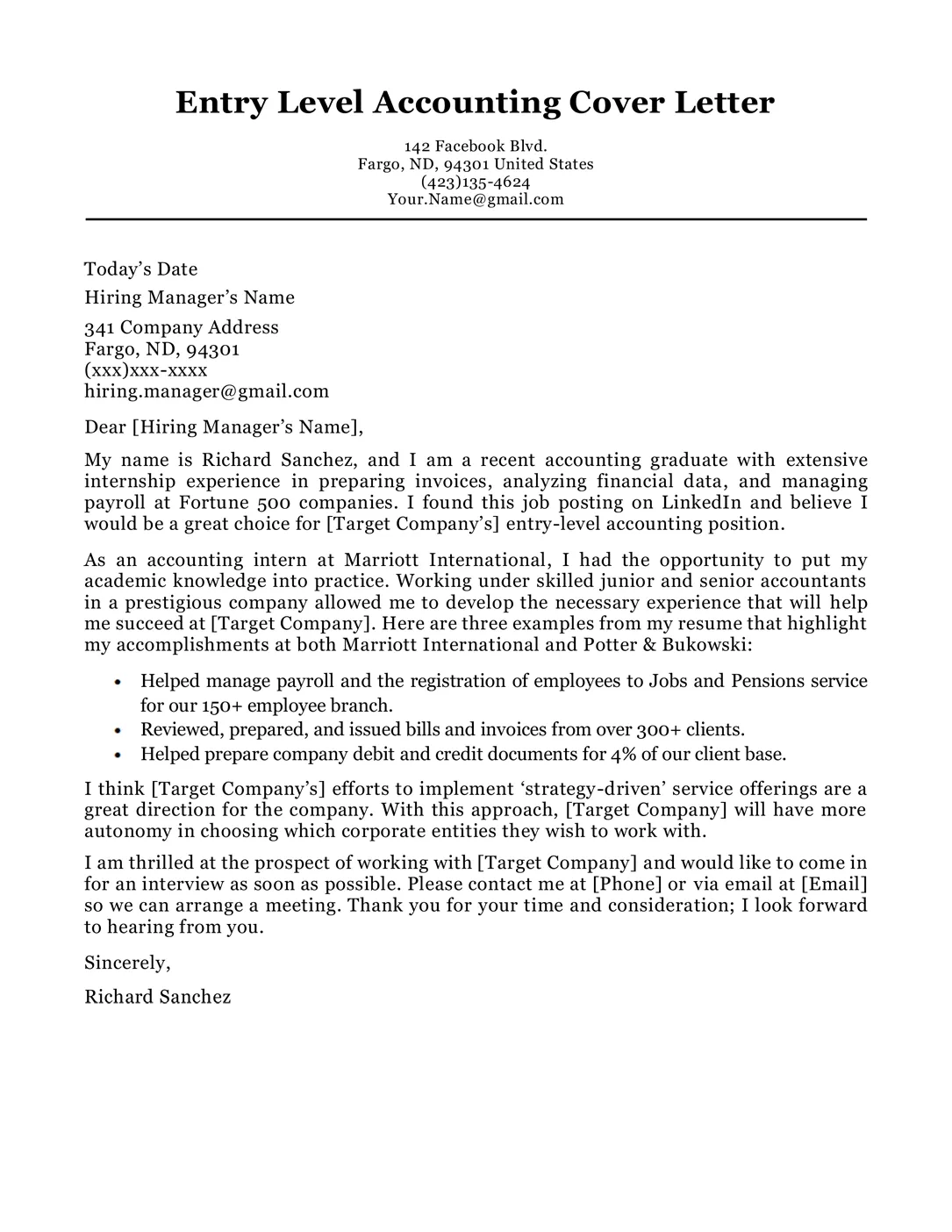
Start your cover letter with a professional header that includes your name, contact information (phone number and email address), and the date. You may also include your LinkedIn profile URL if you have one. Make sure your contact information is up-to-date and easily accessible. In the header, include the hiring manager’s name and title if you know it, followed by the company’s name and address. If you cannot find the hiring manager’s name, address the letter to ‘Hiring Manager’.
Personalized Greeting
Always begin your cover letter with a personalized greeting. Address the hiring manager by name if you know it. If you don’t know the name, use a professional greeting such as ‘Dear Hiring Manager’ or ‘Dear [Company Name] Team’. Avoid generic greetings like ‘To Whom It May Concern’ as they show a lack of attention to detail. A personalized greeting shows you’ve done your research and are genuinely interested in the position.
Opening Paragraph
The opening paragraph is your chance to capture the reader’s attention and make a strong first impression. Clearly state the position you’re applying for and where you saw the job posting. Briefly mention why you’re interested in the role and the company. Consider including a brief statement about your relevant skills or experience, or express your enthusiasm for the opportunity. Make your opening paragraph engaging and make the reader want to learn more.
Body Paragraphs Emphasizing Skills
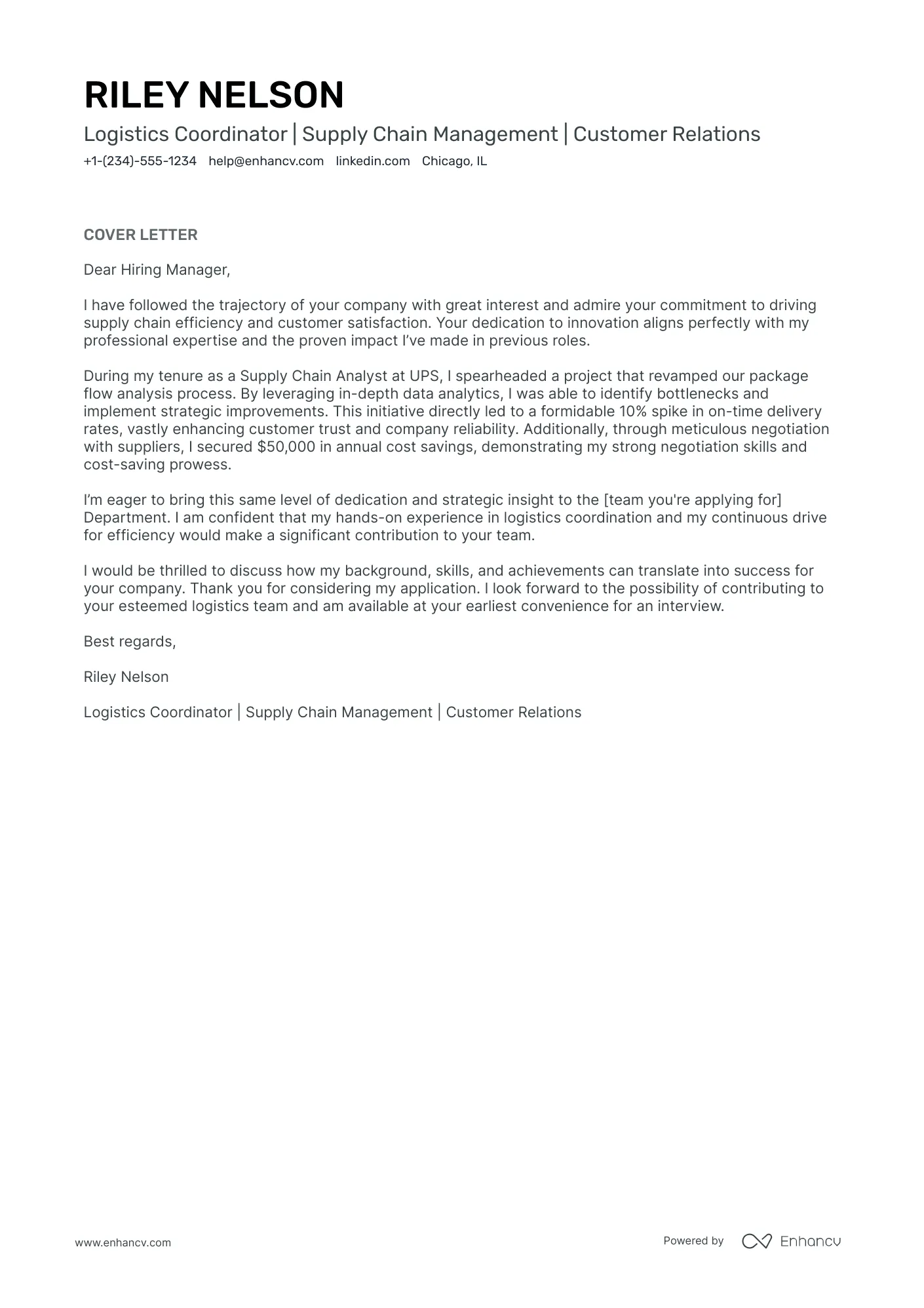
The body paragraphs are where you showcase your key skills and experiences. Dedicate each paragraph to a specific skill or accomplishment, providing detailed examples to support your claims. Use the STAR method to structure your examples, outlining the Situation, Task, Action, and Result. Quantify your achievements whenever possible, providing specific data to demonstrate your impact. Tailor these paragraphs to the requirements outlined in the job description, ensuring your skills align with the company’s needs. This is your opportunity to shine.
Closing Paragraph and Call to Action
Conclude your cover letter with a strong closing paragraph that reiterates your interest in the position and expresses your enthusiasm for the opportunity. Thank the hiring manager for their time and consideration. End with a call to action, such as requesting an interview or stating your availability for a follow-up call. Keep it professional and enthusiastic, leaving the reader with a positive impression. End the letter with a polite and professional closing, such as ‘Sincerely’ or ‘Best regards’.
Showcasing Relevant Experience
Even if you’re applying for an entry-level position, you likely have some form of relevant experience. Think about any previous roles, part-time jobs, volunteer work, or internships that have provided you with customer service skills. Highlight your responsibilities and achievements in these positions, focusing on how they align with the requirements of the role you’re applying for. Use action verbs to describe your duties and quantify your achievements whenever possible. Even seemingly unrelated experiences can demonstrate skills useful in customer service.
Highlighting Volunteer Work and Internships
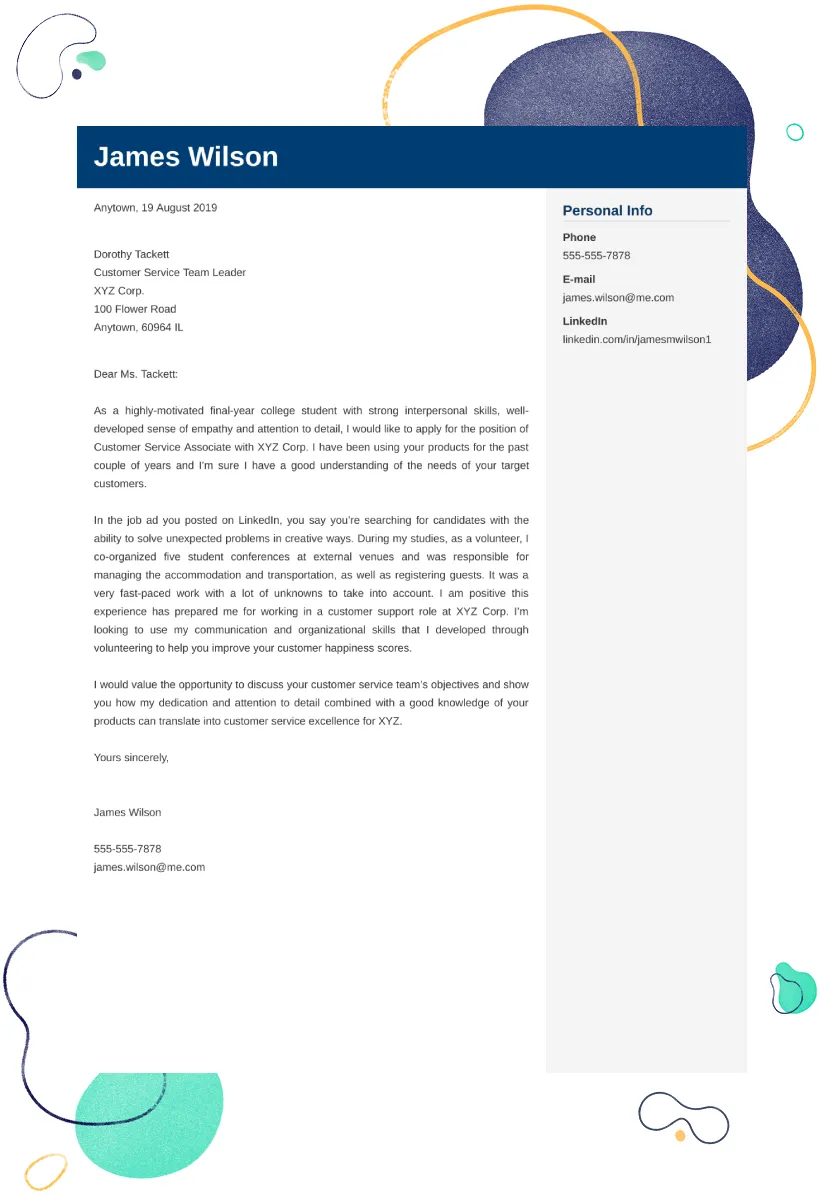
Volunteer work and internships can provide valuable experience, even if they’re not directly related to customer service. Use your cover letter to highlight the skills and experiences you’ve gained through these opportunities. Focus on any instances where you interacted with the public, assisted customers, resolved issues, or worked as part of a team. Describe your responsibilities and achievements, emphasizing how your contributions benefited the organization or its customers. Show how these experiences have prepared you for a customer service role.
Quantifying Achievements
Whenever possible, quantify your achievements to demonstrate your impact. Instead of saying ‘I improved customer satisfaction,’ say ‘I improved customer satisfaction scores by 15% within six months.’ Use numbers, percentages, and specific data to provide concrete evidence of your skills and abilities. Quantifying your achievements makes your cover letter more compelling and provides tangible proof of your value. Quantifiable results immediately stand out to hiring managers.
Tailoring Your Cover Letter
A generic cover letter will not impress. Tailor your cover letter to each specific job you apply for. Carefully read the job description and identify the key skills and requirements the employer is seeking. Modify your cover letter to address these specific needs, highlighting the relevant skills and experiences that make you a strong fit for the role. Show the hiring manager that you’ve done your research and understand the company’s needs. Tailoring your letter demonstrates your genuine interest in the position.
Researching the Company
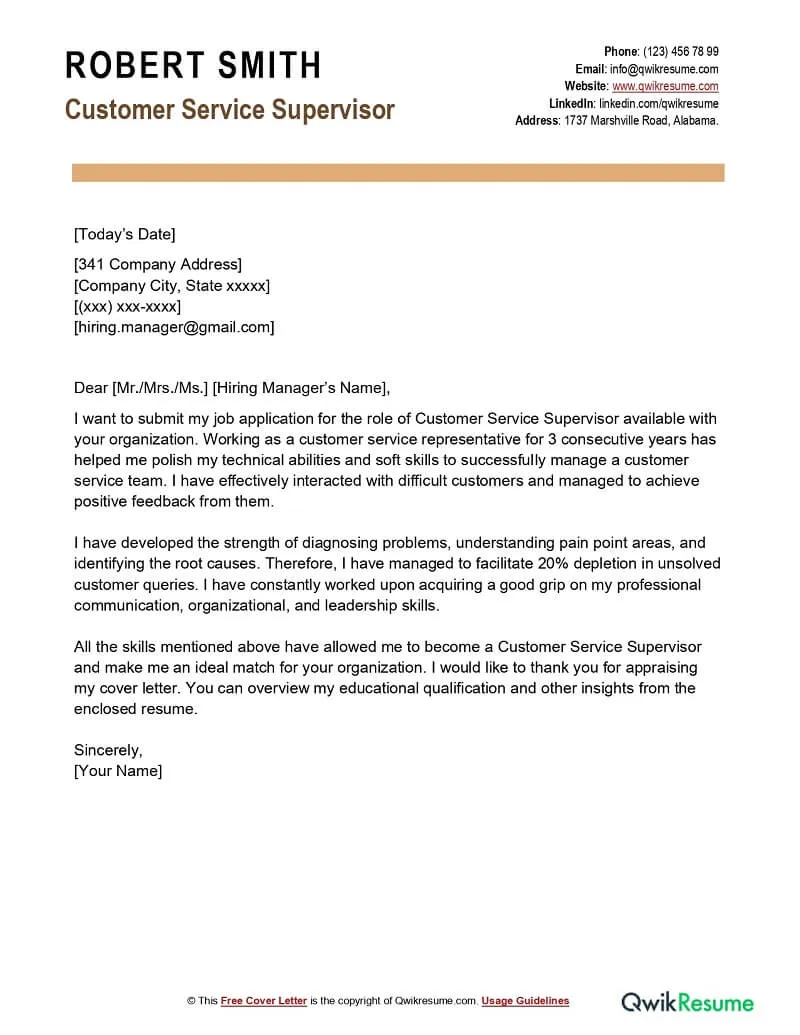
Before writing your cover letter, research the company. Understand their mission, values, and the products or services they offer. Visit their website, read news articles, and check their social media presence to gain insights into their culture and operations. Use this information to tailor your cover letter to align with the company’s specific needs and values. Showing that you’ve researched the company demonstrates your genuine interest and increases your chances of making a positive impression. Show your understanding of their needs.
Using Keywords from the Job Description
Carefully review the job description and identify keywords related to the skills, experience, and qualifications the employer is seeking. Incorporate these keywords naturally throughout your cover letter, especially in the body paragraphs where you describe your skills and experiences. This helps the hiring manager quickly recognize your qualifications and ensures your application gets past applicant tracking systems (ATS). However, avoid keyword stuffing; your cover letter should still read naturally and be easy to understand. Keywords are a key to success.
Proofreading and Editing
Proofreading and editing are crucial steps to ensure your cover letter is free of errors and reflects your professionalism. Carefully review your letter for any typos, grammatical errors, or punctuation mistakes. Read your letter aloud to catch any awkward phrasing or sentences that don’t flow smoothly. Ask a friend or family member to proofread your letter for a fresh perspective. A polished and error-free cover letter demonstrates your attention to detail and commitment to quality. Presentation is key.
Common Mistakes to Avoid
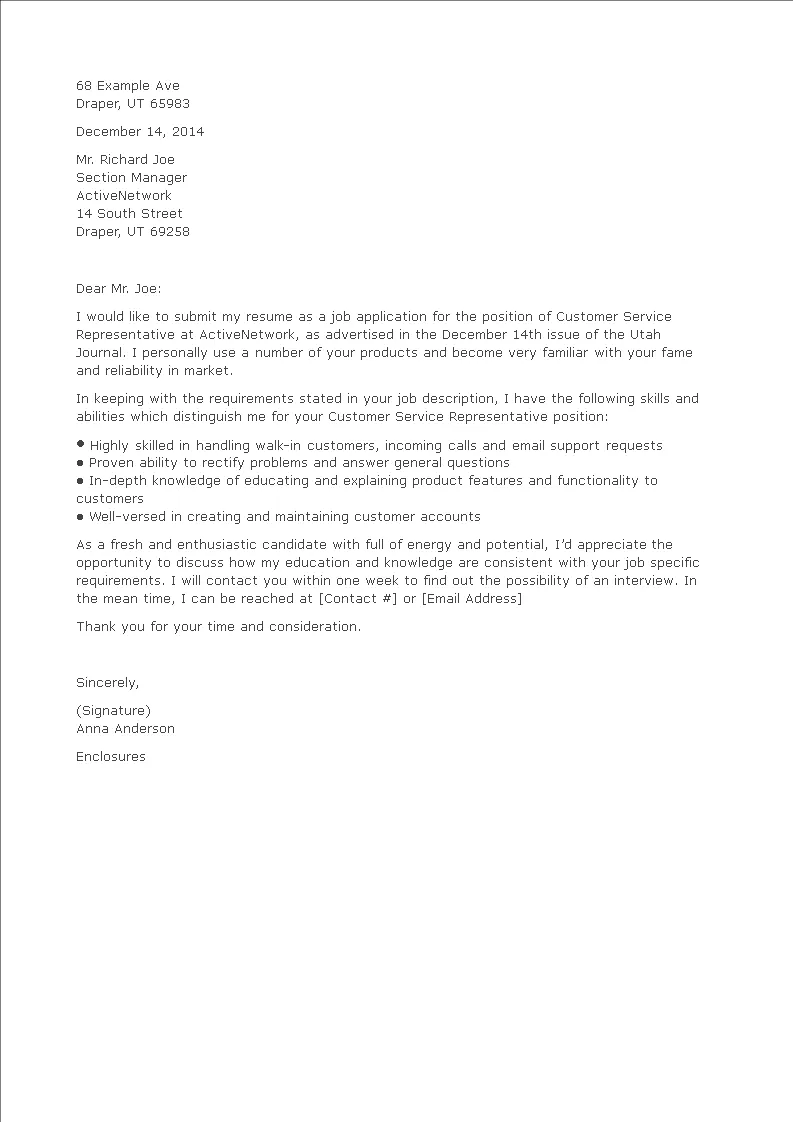
Several common mistakes can undermine your chances of success. Avoid these pitfalls to increase your chances of landing an interview.
Generic Cover Letters
Avoid sending a generic cover letter that you use for every job application. Customize your cover letter to each specific job and company to demonstrate your genuine interest and suitability for the role. Tailoring your cover letter shows you’ve done your research and are not simply sending out a mass application.
Focusing on ‘I’ instead of ‘You’
While you should highlight your skills and experiences, avoid focusing solely on yourself. Shift the focus to how you can contribute to the company and meet their needs. Frame your accomplishments in terms of how they benefited previous employers or customers. Show how you can help them.
Typos and Grammatical Errors
Typos and grammatical errors can make your cover letter look unprofessional and damage your credibility. Carefully proofread your letter and use spell-check and grammar-check tools. Ask someone else to review your letter before you submit it. A perfect cover letter shows you care.
Finalizing and Submitting Your Cover Letter
Before submitting your cover letter, double-check that it is error-free and tailored to the specific job. Save your cover letter as a PDF file to preserve its formatting. Include your cover letter as an attachment when you apply online, or copy and paste it into the body of the email if requested. Follow the instructions provided in the job posting carefully. Ensure everything is ready for your application.
Preparing for the Interview
If you are called for an interview, congratulations! Now it’s time to prepare. Review your cover letter and resume. Prepare for questions about your skills, experiences, and why you are interested in the role and the company. Research common customer service interview questions and practice your answers. Be ready to provide specific examples of your skills and achievements. Confidence and preparation are key.
